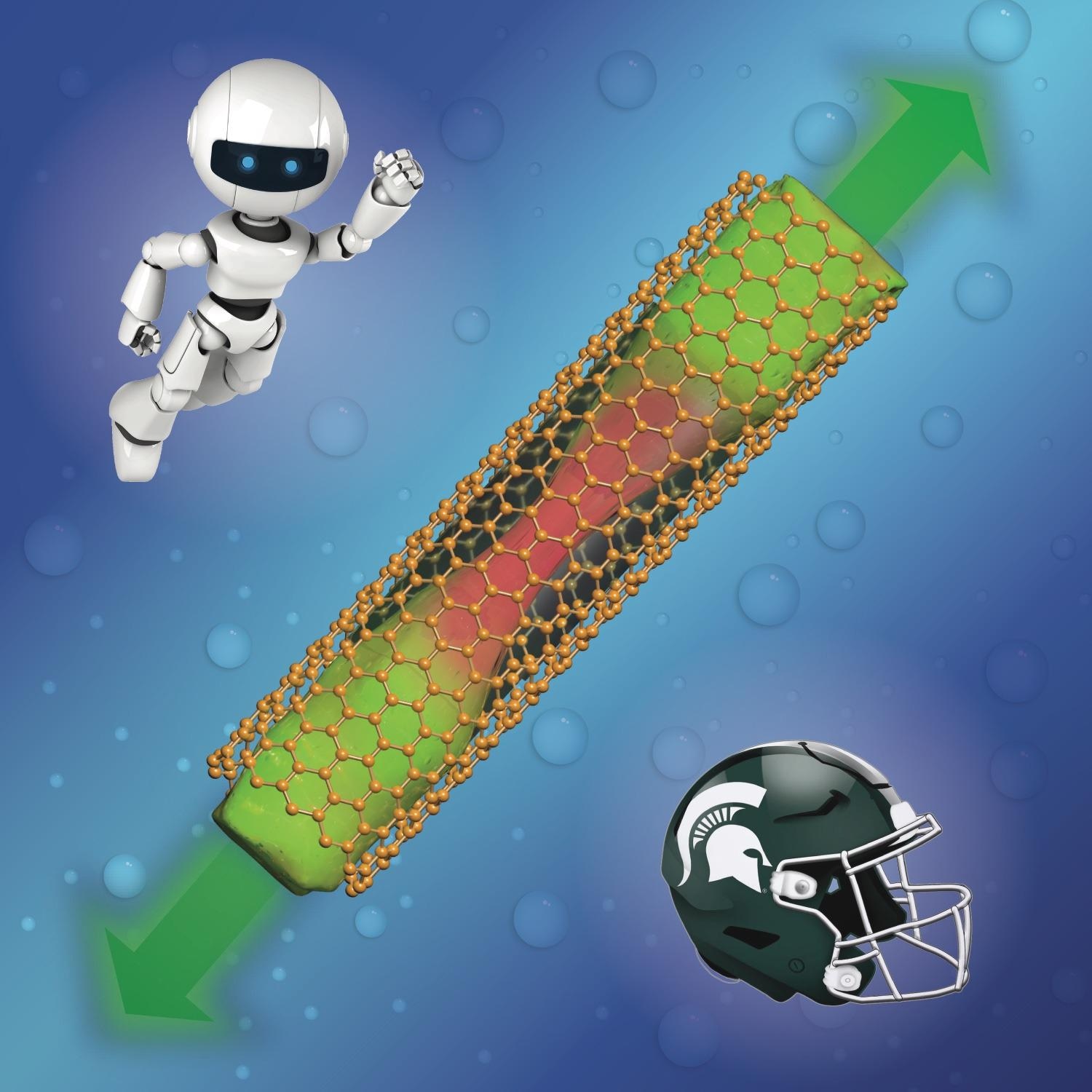Scientists at the Michigan State University have made a ground-breaking discovery while designing a reusable liquid nanofoam material for football helmets, which could push the material closer to real-world use in a range of applications.
 This graphic shows how the liquid nanofoam acts like a solid, "stretches" and flows out of the nanopore tube. Potential applications of the reusable pads include football helmets and wearable technology. Image Credit: Mingzhe Li.
This graphic shows how the liquid nanofoam acts like a solid, "stretches" and flows out of the nanopore tube. Potential applications of the reusable pads include football helmets and wearable technology. Image Credit: Mingzhe Li.
Weiyi Lu, an associate professor in the Department of Civil and Environmental Engineering, and his research associate, Mingzhe Li, discovered that liquid flowing into a nanopore behaves a lot like a solid. The liquid pulls itself apart similar to pulling apart a piece of saltwater taffy forming a thin “neck” in the center of the nanopore that ultimately breaks, resulting in the liquid flowing out of opposite ends of the nanopore.
This discovery will have a major effect on the model design of liquid nanopore pads that aim to be more effective and stronger than foam pads.
From previous research, we knew how the liquid flowed into the nanopores and now, we know how it flows out.
Weiyi Lu, Associate Professor, Department of Civil and Environmental Engineering, Michigan State University
The laboratory experiments and the replication work of Baoxing Xu, an associate professor at the University of Virginia, and Yuan Gao, a postdoctoral scholar at the University of Illinois at Urbana–Champaign, helped make this significant discovery.
This new discovery means that the liquid nanopore material can match the goal of being flexible, reusable and more comfortable. Future liquid nanofoam devices can have possible applications in places beyond the football field, in cars and wearable devices to track health conditions.
The study was published in the December 15th issue of the journal Matter.
Journal Reference:
Gao, Y., et al. (2021) Anomalous solid-like necking of confined water outflow in hydrophobic nanopores. Matter. doi.org/10.1016/j.matt.2021.11.023.
Source: https://msu.edu